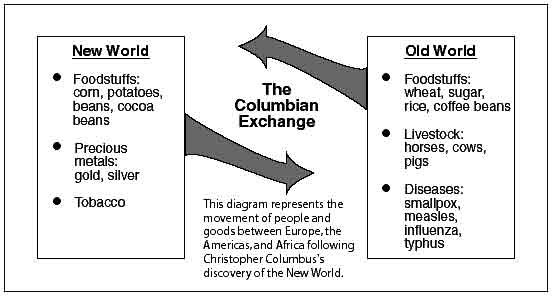
Which explorer was the exchange of goods between the old and new world named after?
A. Ferdinand Magellan
Incorrect. He had the first “round the world” voyage, but the exchange was not named for him.
B. Christopher Columbus
Correct! The voyage of Columbus in 1492 is what began the Columbian Exchange.
C. Francisco Pizarro
Incorrect. Pizarro conquered the Inca people, but the exchange was not named for him.
D. Amerigo Vespucci
Incorrect.
What is the basic way that the Columbian exchange worked?
A. Items, ideas, and animals were exchanged between the Old World and the New World.
Correct! There was an exchange of goods between both areas.
B. Items, ideas, and animals were brought only from the Old World to the New World.
Incorrect. There were many items brought from the New World to the Old World, including corn and potatoes.
C. Items, ideas, and animals were brought only from the New World to the Old World.
Incorrect. There were many items brought from the Old World to the New World, including grains and livestock.
D. Only animals were transported in the Columbian Exchange.
Incorrect. The Columbian Exchange also involved plants and diseases.
According to this chart, diseases were brought from the Old World to the Americas. What was the effect of the diseases on the native populations?

A. There was no effect on the native populations.
Incorrect. There was a devastating effect from these diseases on the natives.
B. Native populations were immune to the diseases that the Europeans brought.
Incorrect. The natives had never been exposed to things like smallpox and measles, so they had no immunities.
C. Native populations developed antibiotics to fight off diseases carried by the Europeans.
Incorrect. Medicine at this time was not advanced in the New World, so they had no way to fight off the diseases.
D. Millions of natives died due to the diseases that the Europeans carried with them.
Correct! In some places as many as 60% of the people living there lost their lives. It was devastating to the native population as a whole.
Which of the following continents was not part of the Columbian Exchange?
A. Europe
Incorrect. Europe was part of the Old World.
B. North America
Incorrect. North America was part of the New World.
C. South America
Incorrect. South America was part of the New World.
D. Australia
Correct! Australia was not part of the Columbian Exchange.